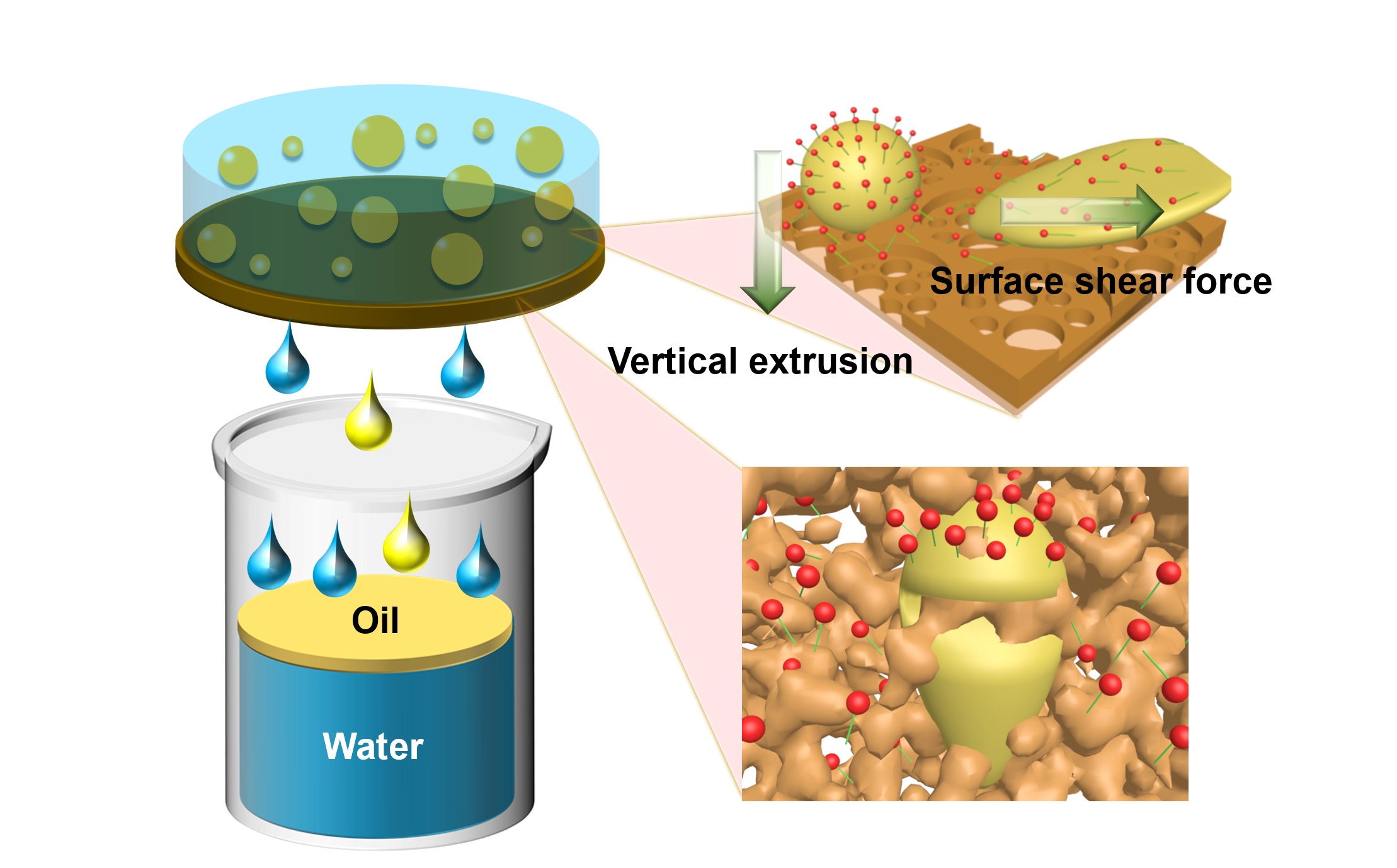Prof. LIU Fu’s group at the Ningbo Institute of Materials Technology and Engineering (NIMTE) of the Chinese Academy of Sciences (CAS) proposed a poly(vinylidene fluoride) membrane with a dual-scale hyperporous structure and rational wettability, which can achieve a continuous “nonfouling” separation for oil/water emulsions via membrane demulsification, in cooperation with researchers at the University of Hong Kong (HKU). The study was published in ACS Applied Materials & Interfaces.
Oily wastewater generated from industrial discharge, ocean oil spills, and human’s daily life has posed great threats to the ecosystem and human health, aggravating the global water shortage. The membrane separation technique shows its superiority over others on account of its high separation efficiency, cost-effectiveness and ease of operation.
However, membrane fouling reduces membrane permeability, thus limiting the practical application of membranes in long-term and efficient oil/water separation.
To achieve a continuous “nonfouling” oil/water emulsion separation, the research group at NIMTE proposesd a dual-scale hyperporous membrane via membrane demulsification.
The vapor/nonsolvent-induced phase separation (VIPS/NIPS) endowed the PVDF membrane a dual-layer hyperporous structure. Different from common membranes, it consists of primary exterior circular pores (0.5-2.5 μm) and secondary interior pores (0.1-0.3 μm). By virtue of enhanced shearing force, the size-matched primary circular micropores facilitated fluid turbulent motion to achieve breaking up of dispersed oils.
Through in situ incorporation of hydrophilic poly(hydroxyethyl methylacrylate) (PHEMA), the membranes showed rational surface wettability (contact angle 59 ± 1°), which facilitated the foulant/membrane interaction for “nonfouling” separation.
The prepared PVDF membrane showed stable permeability (1078 ± 50 Lm-2h-1bar-1) and high separation efficiency (>99.0%) for toluene-in-water emulsion in 2 h of continuous cross-flow filtration without physicochemical washing compared to superwetting membranes. The permeation is composed of two distinct immiscible liquid phases via coalescence demulsification.
The study has proposed a promising solution to the continuous oil/water separation with negligible fouling via membrane demulsification, and offered insight into the practical application of oil/water separation and fundamental research of membrane demulsification.
This work was supported by the National Nature Science Foundation of China (No. 51661165012), NSFC/RGC Joint Research Scheme sponsored by the Research Grants Council of Hong Kong and the National Natural Science Foundation of China (No. N_HKU706/16), and Zhejiang Provincial Natural Science Foundation of China for Distinguished Young Scholars (No. LR20E030002).

Fig. The dual-scale hyperporous PVDF Membrane for “nonfouling” oil/water separation (Image by NIMTE)
Contact
LIU Fu
Ningbo Institute of Materials Technology and Engineering
E-mail: fu.liu@nimte.ac.cn

